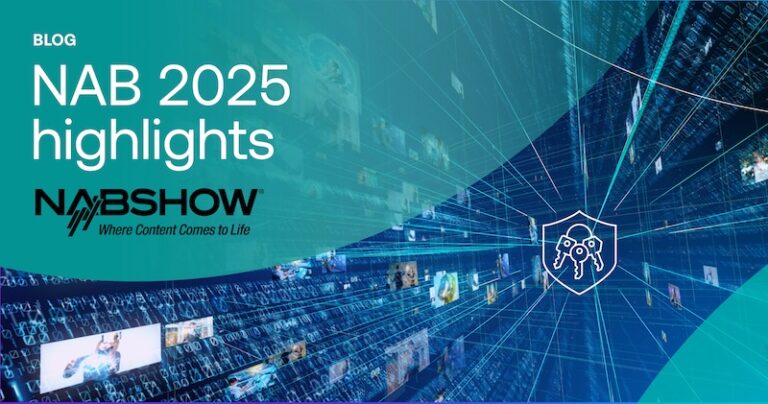Streaming of concerts, plays, and other high-value events has reached an unprecedented scale. While Covid triggered the event streaming surge, it looks like online access will remain available to audiences long after venues return to in-person attendance. As a result, the ad hoc, often under-protected approaches to live-event streaming prompted by the onset of Covid need to be reconsidered. Systematized online productions that maximize protection in the most cost-effective, hassle-free ways possible will be the new norm.
Producers have come to realize there are many benefits to retaining streamed event viewing with the return to in-venue attendance, starting with the fact that streaming has become a significant source of revenues beyond live gate receipts. With over 67% of consumers worldwide streaming live video long before the pandemic hit, as reported by the Interactive Advertising Bureau, there’s a user base out there that’s well accustomed to going online to watch scheduled content.
The demand is growing
These are consumers who not only want live performances to be in the mix of what’s available; they want more. Even during the pandemic, over a quarter of music fans in the U.S. and U.K. surveyed by Global Web Index said there weren’t enough streamed concerts.
Moreover, most are willing to pay for access. According to a recent survey of 7,000 U.S. consumers by online promoter Bandsintown, most of the 74% of respondents who said they wanted live streaming of shows to continue after the pandemic said they were willing to pay to watch.
Even before the pandemic shut venues down, 45% of U.S. consumers responding to a study conducted by Livestream and New York Magazine said they would be willing to pay for streamed access to events, and 67% of those who recently watched a live streamed event said they purchased tickets to another. As this blog posted by Carnegie Mellon’s Arts Management & Technology Laboratory puts it, “Considering the success of streaming in media and entertainment, a move to start utilizing streaming to reach performing arts audiences was inevitable, even without the pandemic.”
Results from widespread streaming of theatrical events bear this out as well. An article published by The Guardian surveying theatrical producers’ attitudes in the wake of their pandemic experiences reported there’s “compelling evidence” that streaming has “secured an expanded place in the industry.”

Moving into pirates’ crosshairs
Digital TV Research projects global losses to piracy are on course to go from $26.7 billion in 2017 to $51.6 billion in 2022. In 2020, Parks Associates raised its projections to say global losses to piracy hit $57 billion in 2019, a figure previously projected for 2021, and would top $67 billion by 2023.
Pirates employ a variety of approaches to making money, including free offerings supported by advertising; packaged service bundles mimicking legitimate services at cut-rate prices; cheap pay-per-view options, and sales of illegal hardware modules typically using open-source Kodi software to stream stolen content to TV sets and other devices.
Illicit business models vary widely, but the most successful ones revolve around websites that aggregate stolen video into legitimate-looking service offerings of on-demand and live content matching what one might receive from a legal OTT service provider. Use of apps such as Periscope and Meerkat to capture and stream live events and content sharing through Usenet groups are popular modes of socially oriented piracy employed by professionals as well as amateurs. And professional pirates are also making use of YouTube Live and Facebook Live to post and generate purloined content with reliance on ad networks’ placement of pre-roll ads to generate revenue.
Protection must be adequate to producers’ needs
As live streaming of events becomes a recurring source of potential revenues for pirates, producers need to implement protection that thwarts this activity to the maximum extent possible. The light security mechanisms that were traditionally used to protect content delivered online, and often still are, may be good enough to ensure the average viewer will pay to access live streamed shows, but they’re no match for today’s serious thieves.
The risks call for implementing content encryption using the virtually unbreakable and most widely deployed version of the Advanced Encryption Standard, AES-128. Encrypting content at this level is a big improvement over simply limiting access to users with authenticated passwords that can be easily shared or running an unprotected video over YouTube, Vimeo, or other streaming platforms.
But merely encrypting the content and passing out keys on an unprotected per-user basis fails to provide sufficient protection in today’s hack-infested environment. Nor is it enough to rely on authentication tokens with signed URLs, as in the native approaches employed by Apple’s HLS Encryption and the open standard RTMP Encryption. While this is a way to limit key availability to legitimate users with keys, any authorized user, including a pirate mercenary who pays for access, can share the first and any subsequent keys with others.
All these drawbacks to reliance on standalone AES-128 encryption explain why premium video producers like movie studios and television broadcast networks require the higher level of security provided by Digital Rights Management (DRM) systems for authorization of distribution online. This is the level of protection that makes sense for delivering live performances to passionate audiences that invariably include a significant number of people willing to circumvent per-view or recurring subscription fees.
DRM is the answer
This higher level of security is rooted in the fact that DRM systems separate decryption keys from the content and manage the entire decryption flow in a secure process that can’t be accessed by end users. License servers react to requests from authenticated devices under control of authorized users by securely transmitting the keys to enable content decryption on the authenticated device.
This prevents use of the keys by any other users or the same user on any other device, with the exception of permissions accorded at the discretion of the license holder for allowing transfer of the content for time-shifted offline viewing on another authenticated device associated with that authorized user. Otherwise, if an authorized user wants to watch the same content on another device, new keys must be issued through the same process of protected interactions with the licensing server of the DRM system associated with that content.
The only manageable approach to delivering protected content across this fragmented device ecosystem involves implementation of a multi-DRM platform. Implemented correctly, it can ensure consistent, friction-free user experiences across all devices with delay-free acquisition of keys from DRM servers run by multiple licensing authorities. Otherwise, distributors would either have to maintain separate security silos to protect each asset stream across all devices or restrict access in order to limit the number of silos.
The solutions lie with cloud-based technology embodied in Intertrust’s ExpressPlay Media Security Suite, including ExpressPlay multi-DRM cloud service and ExpressPlay Anti-piracy service.
To learn more about how to employ the most effective arsenal available for ensuring the highest levels of protection for streaming live sports, concerts, plays and other performances, please contact us or request a free trial.








